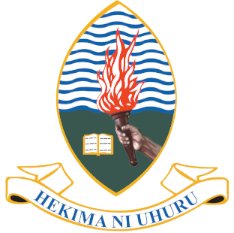
ELIKANA KALUMANGA NGALLABA
Lecturer, College Of Natural And Applied Sciences
Education:
PhD in Physical Geography (Landscape Ecology) - Stockholm University, Sweden
Teaching:
Dr. Kalumanga is involved in teaching undergraduate and postgraduate courses on wildlife ecology, natural resources management, community-based conservation, conservation policies and governance, climate change and biodiversity conservation, and applied research techniques.
Research:
Research interests: Dr. Kalumanga has more interest on landscape and wildlife ecology with a particular focus on habitat connectivity and movement of large mammals such as elephants; community-based conservation; integrated natural resources management; climate change (ecosystem-based adaptation); landscapes restoration with a particular interest on sustainable conservation of biodiversity for the valuable ecosystem services for inclusive development at different levels.
Projects:
- Africa Climate Leadership Program (AfriCLP): Building Africa’s Resilience through Research, Policy and Practice (https://africlp.or.ke/elikana-kalumanga/): 2016 – 2020
- Habitat connectivity: Assessing sustainability of corridors connecting the Ngorongoro Conservation Area and other protected areas in Northern Tanzania: 2020 - 2021
Publications:
- Mwambala, A. N., Nyundo, B. A., &Kalumanga, E. (2019). Interface of biodiversity and ecosystem services: Does soil organic carbon correlate with the diversity of carabid beetles (Coleoptera: Carabidae) in the Uzungwa Scarp Nature Reserve, Tanzania?.International Journal of Biodiversity and Conservation, 11(4), 114-124.
- Elikana Kalumanga , Donald G. Mpanduji, and Sara A. O. Cousins (2017). Geophagic termite mounds asone of the resources for African elephants in Ugalla Game Reserve, Western Tanzania. African Journal ofEcology 55: 91-100.
- Lynch, A. Jasmyn J., Kalumanga, Elikana, and Ospina, Guillermo A. (2016). Socio-ecological aspects of sustaining Ramsar wetlands in three biodiverse developing countries. Marine and Freshwater Research 67(6) 850-http://dx.doi.org/10.1071/MF15419
- Kangalawe, R.Y.M., Mung’ong’o, C.G., Mwakaje, A.G., Kalumanga, E. and Yanda, P.Z. (2016). Climate Change and variability impacts on agricultural production and livelihood systems in western Tanzania. Climate and Development [DOI: 10.1080/17565529.2016.1146119]
- Hamisi, H. I., Tumbo, M., Kalumanga, E., and Yanda, P. (2012). Crisis in the wetlands: combined stresses in a changing climate – experience from Tanzania. Climate and Development4, 5–1 DOI: 10.1080/17565529.2012.665009
- Kangalawe, R.Y.M., Mung’ong’o, C.G., Yanda, P.Z., Mwakaje, A.G., Kalumanga, E. (2009). Climate change and variability impacts, vulnerability and adaptive capacity in Kasulu District, Tanzania. Chapter 2. In: Kangalawe, R.Y.M., Mung’ong’o, C.G. and Yanda, P.Z. (Eds.). People’s Perceptions and Community Response to Climate Change and Variability: Selected Cases from Tanzania. Institute of Resource Assessment, University of Dar es Salaam.
- Kalumanga, E (2008). Abundance and Diversity of Small Mammals in the Disturbed and UndisturbedForests in Uluguru Mountains, Tanzania. The Arc Journal, 22: 19-26.
- Kalumanga, E (2008). First recorded sighting of the ornate shovel snout snake in 80 years.The Arc Journal, 42.

